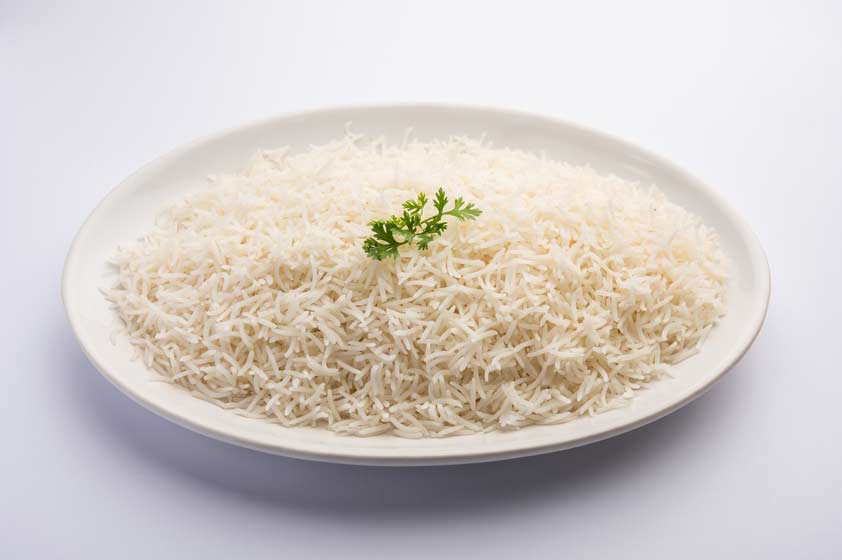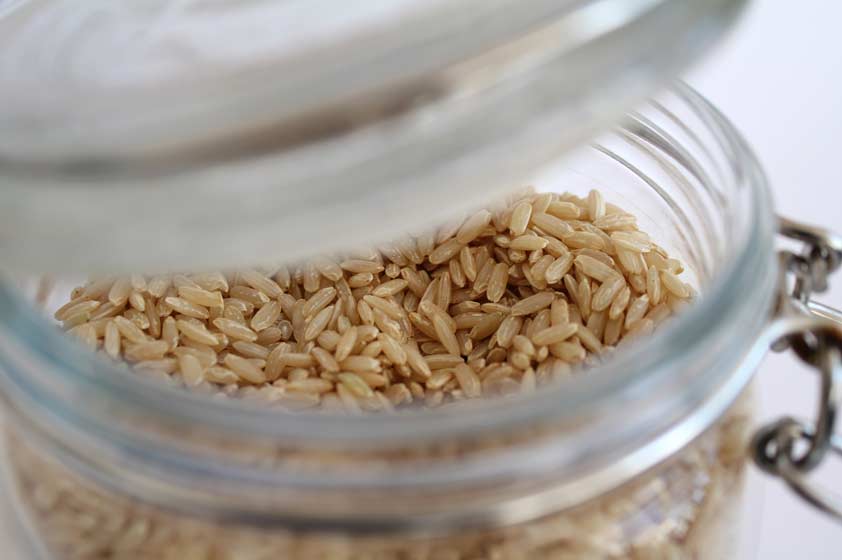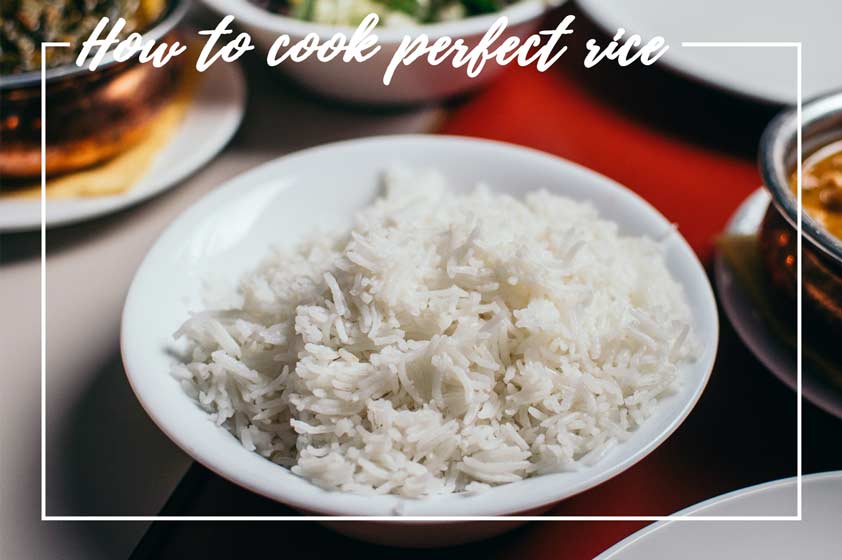Ever had rice that was burned, mushy, or even worse after cooking it? If so, you are not by yourself. Rice preparation might be challenging, but it doesn’t have to be. You can consistently cook great rice on a stove with a little practice and the appropriate technique.
We will discuss how to cook rice on a stove in this blog post. We will go through everything, from the best rice to use to the best methods for cooking it consistently. You will be able to prepare a wonderful and nutritious meal for your entire family with the knowledge provided here.
Cooking different type of rice
Preparing several kinds of rice can be a tasty and enjoyable way to spice up your meals. Each variety of rice has a distinct flavor and texture. You may quickly learn how to prepare a range of rice meals that are appropriate for any occasion with the right methods.
How to cook white rice
Millions of people worldwide eat white rice as a staple diet. The practice of growing rice is thought to have started in Asia more than 10,000 years ago. Since numerous rice varieties were created over time, there are now thousands of different kinds of rice that can be found all over the world. White rice has emerged as the variety of rice that is consumed the most internationally among various varieties. This is because it pairs well with many different recipes thanks to its adaptability, simplicity in the kitchen, and mild flavor.
Here’s how to cook white rice on the stove
Ratio of water to rice 1,5:1
- Rinse 2-3 times rice in the cold water. This helps to remove any dirt or impurities from the grain.
- Add the rice to a pot and pour cold water. The ratio of water to rice should be 1,5:1.
- Add a pinch of salt.
- Bring to boil on medium heat without the lid.
- Lower the heat to low, put on the lid and simmer the rice for 15 minutes (do not lift the lid or stir).
- Remove the pot from the heat and let it sit for 10 minutes (with the lid on). This allows the rice to absorb the water and become fully cooked.
- Fluff the rice with a fork and serve.
| Nutrition Facts of white rice | |
| Amount per serving | 100 g |
| Calories | 362 Kcal |
| Energy value | 1513 kJ |
| Fat | 1 g |
| Saturated Fat | 0.1 g |
| Carbs | 85.1 g |
| Sugar | 0.2 g |
| Protein | 6.7 g |
| Salt | <0.1 g |

How to cook Basmati rice
Basmati rice is a long-grain variety of rice that is native to India and Pakistan. This fragrant rice stands out from other types of rice thanks to its distinct nutty flavor and scent. The thin, delicate grains of basmati rice are also known for cooking up fluffy and separate, making them a great option for many cuisines.
Even though Basmati rice is frequently more expensive than other types of rice, food enthusiasts all around the world favor it for its distinct flavor and scent. In fact, because of its distinct flavor and texture, basmati rice is frequently regarded as the greatest variety of rice for cooking. It is frequently used in many different recipes, like biryani, pilaf, and curry.
In order not to make them too mushy – don’t rinse rice.
Here’s how to cook Basmati rice on the stove
Ratio of water to Basmati rice 1,5:1
- Place the Basmati rice in a pot and add cold water. The ratio of water to rice should be 1,5:1.
- Bring the water to a simmer over medium heat without the lid.
- Once the water is simmering, lower the heat to low and place the lid on the pot. Cook for 11 minutes.
- Remove the pot from the stove and let the rice rest for an additional 10 minutes with the lid still on..
- Fluff the cooked rice with a fork before serving.
| Nutrition Facts of Basmati rice | |
| Amount per serving | 100 g |
| Calories | 357 Kcal |
| Energy value | 1495 kJ |
| Fat | 0.5 g |
| Saturated Fat | 0.1 g |
| Carbs | 83.7 g |
| Sugar | 0.1 g |
| Protein | 8.1 g |
| Salt | <0.1 g |
How to cook Jasmine rice
The white rice variety known as jasmine is frequently used in Southeast Asian cooking, notably Thai cooking. This delicate, fragrant rice is favored for its delicate flavor and aroma, making it a popular option for a variety of cuisines.
Jasmine rice does not require rinsing before cooking, similar to Basmati rice, which might assist preserve its delicate flavor and texture. When prepared correctly, jasmine rice should be fluffy, light, and just a little bit sticky, making it the ideal accompaniment to foods that are salty or spicy.
Here’s how to cook Jasmine rice on the stove
Ratio of water to Jasmine rice 1.25:1
- Add the Jasmine rice to a pot and pour in the water. The ratio of water to rice should be 1.25:1.
- Bring the water to a simmer over high heat without the lid.
- Once the water is simmering, lower the heat to low and put the lid on the pot. Cook for 11 minutes.
- Once the rice is cooked, remove the pot from the heat and let it rest for another 10 minutes with the lid still on.
- Use a spatula to gently fluff the rice before serving.
| Nutrition Facts of Jasmine rice | |
| Amount per serving | 100 g |
| Calories | 320 Kcal |
| Energy value | 1337 kJ |
| Fat | 2.4 g |
| Saturated Fat | 0.2 g |
| Carbs | 68.4 g |
| Sugar | 0.2 g |
| Protein | 5.9 g |
| Salt | <0.1 g |

How to cook brown rice
Brown rice is a popular and nutritious whole grain that is enjoyed around the world. Unlike white rice, brown rice is minimally processed and retains the nutritious outer bran layer, which is rich in fiber, protein, iron, zinc, B vitamins, vitamin E, and manganese. Brown rice is also low in calories and fat, making it an ideal choice for those seeking a healthy and balanced diet.
When cooked properly, brown rice should be tender, fluffy, and slightly chewy. It can be used in a wide variety of dishes, including salads, stir-fries, and pilafs. This recipe is suitable for both medium grain and long grain brown rice.
Here’s how to cook Brown rice on the stove
This time we will need more water, ratio of water to rice – 6:1
- Rinse rice under the water a couple times and drain.
- Add them to the pot and pour in the water.
- Bring it to boil on medium heat without the lid. Lower the heat to low, put the lid on and cook for 30 min.
- Drain cooked rice very well so there would be no access water. Put rice back in the pot on the turned off stove with the lid on for 10 more minutes.
- Fluff the rice with a fork or a spatula and serve.
| Nutrition Facts of brown rice | |
| Amount per serving | 100 g |
| Calories | 339 Kcal |
| Energy value | 1418 kJ |
| Fat | 1.5 g |
| Saturated Fat | 0.3 g |
| Carbs | 77 g |
| Sugar | 0.7 g |
| Protein | 7.7 g |
| Salt | 0.02 g |
Tips for cooking perfect rice
Last for up to 4 days in an airtight container.
If you leave your rice at room temperature, it will start to ferment. Fermentation occurs when bacteria break down the starches in the rice and produce alcohol and carbon dioxide gas. If left alone, the fermentation process will continue until the rice becomes moldy and stinky. To prevent this, wait till rice cools down, put them in an airtight container and refrigerate.
Yes. Wait till the rice are completely cooled down then put in the freezer bag or container and place in the freezer. You can keep them there for up to 1 month, but not longer.
Stove: add 1-2 tablespoons of water per cup, turn the stove heat to low. Allow the rice to cook slowly until warmed through (up to 10min).
Microwave: add 1-2 tablespoons of water per cup and heat on high for 2 minutes, stir, and continue heating for 1 minute at a time until heated through.
Oven: Place the rice in a baking dish and bake at 180C degrees for 15 to 20 minutes.
In conclusion, knowing how to cook different types of rice is an essential skill for any home cook. Whether you prefer Basmati, Jasmine, or Brown rice, each type requires a slightly different cooking method to achieve perfect results. By following the tips and instructions provided in this blog, you can cook any type of rice perfectly each time and enjoy their unique flavors and nutritional benefits. So, don’t be afraid to experiment with different types of rice and try out new recipes.

